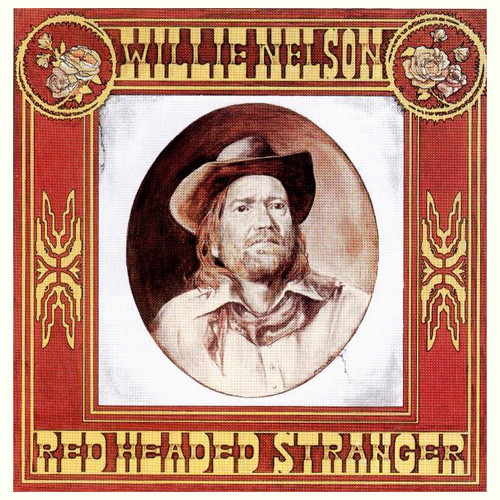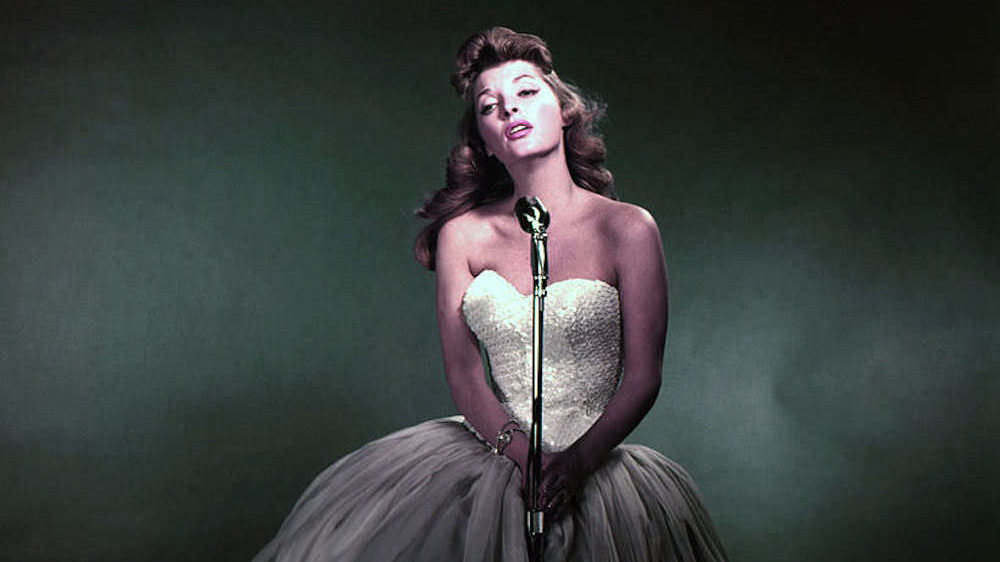
Willie Nelson’s career-defining masterpiece symbolizes the transition from the glossy Nashville Sound of the then-recent past to the more introspective songwriting of a new generation of country songwriters; it’s an indisputable classic that harkens back to the rich storytelling tradition of country and western music.
It’s “Soundtrack Month” here at Strange Currencies, which means that it’s time for me to make some far-reaching and flimsy connections in order to justify reviewing the album I really wanted to – Willie Nelson’s 1975 classic Red Headed Stranger. If you squint just right, and bend the rules a little, it works. Yes, the album came before the actual movie by about a decade. Yes, the movie wouldn’t exist without the album. What’s your point? It’s a good record. Just enjoy.
Amongst the various reasons to pick Willie is that I think he provides a nice counterpoint to my Marty Robbins review from last month. Willie paints a darker and more nuanced view of human nature and the West, compared to Marty’s “good versus evil” morality. Willie’s “Stranger” is impulse and regret; Marty’s ranger is high ground and compass. Both create indelible notions of masculinity and personal code, an inner conflict behind a seemingly invincible – but ultimately thin – shell.
The story of and the story behind Red Headed Stranger are equally fascinating. The album itself has a stripped-down simplicity that lends it a demo-tape feel – similar in a way to Bruce Springsteen’s Nebraska. It works, largely because Willie is seldom better than when stripped down to the essential sound of his voice and his faithful guitar, Trigger. Nelson signed with Columbia just prior to the album’s recording, and it would represent his first effort for the label. On it, he tells the story of the “Red Headed Stranger” – a man spurned by the unfaithfulness of his partner – through a blend between cover songs and original works. The central subject is borrowed from a song by the same name, written in 1953 by Edith Lindeman and Carl Stutz for (but not ever recorded by) Perry Como. Nelson knew of the song, most likely via Eddy Arnold and fellow Columbia artist John Loudermilk.
Nelson fills in the gaps between these covers to expand the legend of the Red Headed Stranger. As the story goes, as told by the Preacher, the Stranger from Blue Rock, Montana arrives home to find that his wife has taken a new lover. At first shocked by his fate, the Stranger then seeks out his estranged wife and her lover. When found, he impulsively and coldly kills them “…with a smile on their faces.” It’s brutal and shocking, and delivered with a master’s touch; note the subtle minor chord change as the Preacher’s lesson ends and the “time for killing begins.”
The true centerpiece of the album – the reason for coming out, so to speak – is Nelson’s cover of “Blue Eyes Crying in the Rain.” At once classic and contemporary, it’s a song that should be a standard shorthand for grief and premature loss, in a way that we now consider cliché for songs like Eric Clapton’s “Tears in Heaven” or James Taylor’s “Fire and Rain.” “Blue Eyes” manages to stand separate from the album’s narrative, but in this case, it represents the Stranger’s turn from impulse to regret and grief. If this were a Marty Robbins song, it would have been told from the perspective of the ranger seeking out the Stranger, and the triumph of the posse catching and justifiably hanging the killer. But this isn’t Marty; Willie’s story is all shades of grey. We don’t get justice, at least not the kind we expect.
The redemption of the Stranger is not clean or direct. He wanders for a time, and kills again, due to an outdated moral code and in the name of chivalry. During the “riding and hiding” of his pain, the Stranger meets the Yellow Haired Lady, who may or may not be trying to steal the Stranger’s departed wife’s “dancing bay pony.” That the Stranger may have invited the lust is not the concern; the concern is that, in grief, the Stranger is doing more to defend his wife’s memory than she did to protect his honor in life. He’s wild in his sorrow, and the ends are justified, regardless of the buildup.
The Stranger’s redemption comes in the arms of a new love, starting with her introduction in “Denver,” where the juxtaposition of them “dancing with smiles on their faces” is equal parts jarring and heartwarming, compared to the earlier killing. The love spans across a four-song medley, ending with the equally funereal, but immensely more upbeat, “Remember Me” – the use of which is gratifying for those rooting for the Stranger, as he seeks redemption for his actions, and release from his previous vows of loyalty, so that he may properly seek a happy life with his new love.
Red Headed Stranger may not be the Willie album to start with, but it is essential to his legend; after all, Willie himself is now widely known as the Red Headed Stranger, confirming the album’s significance in his body of work. Its simplicity is a departure from his earlier recordings, and it showcases his lyrical and instrumental depth. The quieter nature lends a greater appreciation to the nuance of his arrangements, the way that induvial notes and lyrical ends tie together across the Stranger’s biography; subtle callbacks illustrate consequences to earlier actions. Nelson created a story that was rich enough to support a subsequent film, and influence a change within his genre, away from the full orchestration of the Nashville Sound, to the more stripped down landscape exemplified by contemporary works from Townes Van Zandt and John Prine.
Red Headed Stranger is easy enough to push for the casual listen. Clocking in at under 45 minutes, it’s a good choice without a lot of commitment. If the album suffers – and that’s a big if – it would only be due to the repetitive nature of the reprise songs. Even then, the ease and pleasure of Nelson’s delivery on each “Don’t boss him, Don’t cross him” quickly negates any criticism. It’s also the rare album that reveals greater and greater depths the more you listen to it. In the modern era, it serves as an easily accessible bridge between the early cowboy country of Marty Robbins and Buck Owens to the more songwriting-centric approaches of the aforementioned Prine, Steve Earle, and others. It’s an album – a soundtrack (wink) – that you should not pass up.



